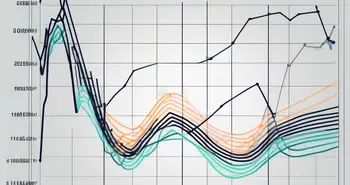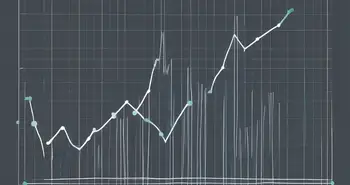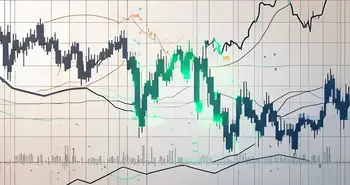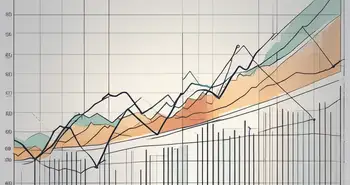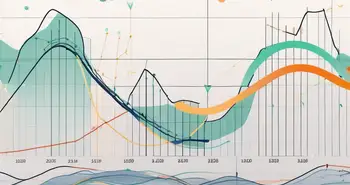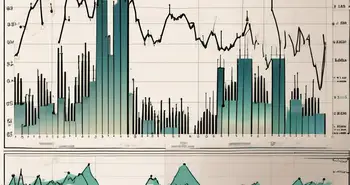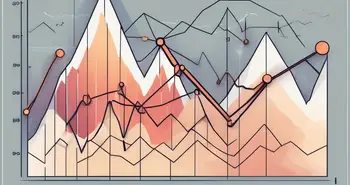What Is EMA in Forex?

In the world of forex trading, there are various tools and indicators that traders use to analyze market trends and make informed decisions. One such indicator is the Exponential Moving Average (EMA). In this comprehensive guide, I will take you through everything you need to know about EMA in forex trading.
Understanding the Basics of EMA in Forex
When it comes to analyzing the forex market, traders have a wide range of tools at their disposal. One such tool is the Exponential Moving Average (EMA), which is a type of moving average that gives more weight to recent price data. This makes it more responsive to changes in price compared to other moving averages.
The EMA is calculated by applying a specific formula to the closing prices of a currency pair over a specified time period. This calculation takes into account the most recent price data, giving it a higher weightage in the final result. As a result, the EMA reacts more quickly to price changes, making it a valuable tool for traders looking to identify trends and make informed trading decisions.
Definition of EMA
The Exponential Moving Average (EMA) is a widely used technical indicator in forex trading. It is a type of moving average that places more emphasis on recent price data, making it more responsive to changes in price compared to other moving averages.
The calculation of the EMA involves applying a specific formula to the closing prices of a currency pair over a specified time period. This formula takes into account the most recent price data, assigning it a higher weightage in the final result. As a result, the EMA reacts more quickly to price changes, allowing traders to capture the most relevant market movements.
By giving more weight to recent price data, the EMA helps traders filter out noise and focus on the most significant price action. This makes it a valuable tool for identifying trends, determining entry and exit points, and managing risk in forex trading.
Importance of EMA in Forex Trading
The Exponential Moving Average (EMA) holds great importance in the world of forex trading. Its ability to identify trends, provide entry and exit signals, and smoothen out price fluctuations makes it a popular tool among traders.
One of the key advantages of using the EMA is its responsiveness to recent price data. By placing more weight on recent price action, the EMA helps traders capture the most relevant market movements. This can be particularly useful in fast-paced markets where quick decision-making is crucial.
Furthermore, the EMA helps traders filter out noise and focus on the underlying trend. By smoothing out price fluctuations, it provides a clearer picture of the overall market direction. This can assist traders in making more informed trading decisions and avoiding false signals.
Another important aspect of the EMA is its ability to generate entry and exit signals. When the price crosses above the EMA, it may signal a bullish trend, while a cross below the EMA may indicate a bearish trend. These signals can help traders identify potential buying or selling opportunities.
Overall, the EMA is a versatile tool that can be used in various trading strategies. Whether you are a short-term trader looking for quick profits or a long-term investor seeking to ride the trend, the EMA can provide valuable insights into the forex market.
The Mechanics of EMA in Forex
The Exponential Moving Average (EMA) is a popular technical indicator used in Forex trading. It is a type of moving average that gives more weight to recent price data, making it more responsive to changes in the market.
Calculating the EMA involves two main components: the smoothing constant and the closing prices. The smoothing constant, also known as the smoothing factor or the alpha value, determines the weight given to each price data point. Higher weights are assigned to recent prices, while older prices receive lower weights. This calculation results in a line that follows the price more closely, making it more responsive to changes.
For example, if the smoothing constant is set to 0.2, the most recent price will have a weight of 20%, while the previous price will have a weight of 16% (0.2 multiplied by 80%). As more data points are added, the weight of older prices decreases exponentially.
Interpreting EMA values can provide valuable insights into market trends. When the price is above the EMA line, it indicates an uptrend, suggesting that buyers are in control. Conversely, a price below the EMA line suggests a downtrend, indicating that sellers are dominating the market. Traders often use this information to make informed decisions about entering or exiting trades.
In addition to the direction of the EMA line, traders also pay attention to crossovers between different EMA periods. A crossover occurs when a shorter EMA period crosses above or below a longer EMA period. For example, if the 20-day EMA crosses above the 50-day EMA, it is considered a bullish signal, potentially indicating a buy opportunity. On the other hand, if the 20-day EMA crosses below the 50-day EMA, it is seen as a bearish signal, suggesting a potential sell opportunity.
It is important to note that the EMA is just one tool among many used by Forex traders. It is often used in conjunction with other technical indicators and analysis techniques to make well-informed trading decisions. Traders may also adjust the smoothing constant and the length of the EMA periods based on their trading strategies and preferences.
In conclusion, the EMA is a powerful tool for analyzing market trends and identifying potential trading opportunities in Forex. By giving more weight to recent price data, it provides a more responsive and dynamic representation of market movements. Traders can interpret EMA values by analyzing the direction of the EMA line and looking for crossovers between different EMA periods. However, it is important to use the EMA in conjunction with other indicators and analysis techniques to make informed trading decisions.
EMA vs Simple Moving Average (SMA)
Key Differences Between EMA and SMA
The main difference between EMA and Simple Moving Average (SMA) is the weighting factor. EMA places more weight on recent prices, while SMA equally weighs all prices within the chosen time period. As a result, EMA reacts faster to market changes and provides more timely signals.
Pros and Cons of Using EMA over SMA
One advantage of using EMA over SMA is its ability to adapt to changing market conditions quickly. This makes it particularly useful for shorter-term traders looking to capitalize on fast-moving markets. However, EMA may generate more false signals during periods of consolidation or choppy price movements.
Strategies for Using EMA in Forex Trading
Single EMA Strategy
The single EMA strategy involves using a single EMA line to identify market trends and potential entry and exit points. Traders can use different EMA periods to suit their trading style and time frame.
Double EMA Strategy
The double EMA strategy combines two EMA lines of different periods. This strategy focuses on the crossover of these two lines to determine market direction and generate trading signals.
Triple EMA Strategy
The triple EMA strategy goes a step further by adding a third EMA line with a longer period. This strategy aims to confirm trend signals provided by the other two EMA lines and can be useful for traders seeking additional confirmation.
Common Mistakes to Avoid When Using EMA
Over-reliance on EMA
While EMA is a powerful tool, it is important not to rely solely on it for trading decisions. It is always beneficial to combine EMA analysis with other technical indicators, fundamental analysis, and market sentiment to gain a holistic view of the market.
Misinterpretation of EMA Signals
Interpreting EMA signals requires careful analysis and understanding of the overall market context. Traders should avoid making impulsive decisions based on isolated EMA crossovers and consider other supporting factors before entering or exiting trades.
FAQ: Frequently Asked Questions
Q: What is EMA in forex?
A: EMA stands for Exponential Moving Average, which is a type of moving average indicator used by forex traders to analyze market trends and generate trading signals.
Q: How is EMA calculated?
A: EMA is calculated by applying a specific formula that gives more weight to recent prices while smoothing out fluctuations. The formula takes into account the smoothing constant and the closing prices of a currency pair over a chosen time period.
Q: What are the advantages of using EMA over SMA?
A: EMA reacts faster to market changes, making it more suitable for short-term traders. It provides timely signals and adapts quickly to changing market conditions.
Q: Can I rely solely on EMA for my trading decisions?
A: No, it is advisable to combine EMA analysis with other technical indicators, fundamental analysis, and market sentiment to make well-informed trading decisions.
Remember, mastering EMA in forex trading takes practice and a deep understanding of market dynamics. As an experienced trader, I encourage you to experiment with different EMA periods and strategies to find what works best for your trading style. Happy trading!
Now that you're equipped with the knowledge of how EMA can enhance your forex trading strategies, take your trading to the next level with Morpher. Experience the future of investing on a platform that offers zero fees, infinite liquidity, and the flexibility of fractional investing. Whether you're looking to trade forex, stocks, cryptocurrencies, or even dive into the world of NFTs and collectibles, Morpher provides a unique, blockchain-based trading experience with up to 10x leverage and a secure, non-custodial wallet. Ready to transform your trading journey? Sign Up and Get Your Free Sign Up Bonus at Morpher.com and join the revolution in global trading.

Disclaimer: All investments involve risk, and the past performance of a security, industry, sector, market, financial product, trading strategy, or individual’s trading does not guarantee future results or returns. Investors are fully responsible for any investment decisions they make. Such decisions should be based solely on an evaluation of their financial circumstances, investment objectives, risk tolerance, and liquidity needs. This post does not constitute investment advice.

Painless trading for everyone
Hundreds of markets all in one place - Apple, Bitcoin, Gold, Watches, NFTs, Sneakers and so much more.

Painless trading for everyone
Hundreds of markets all in one place - Apple, Bitcoin, Gold, Watches, NFTs, Sneakers and so much more.

